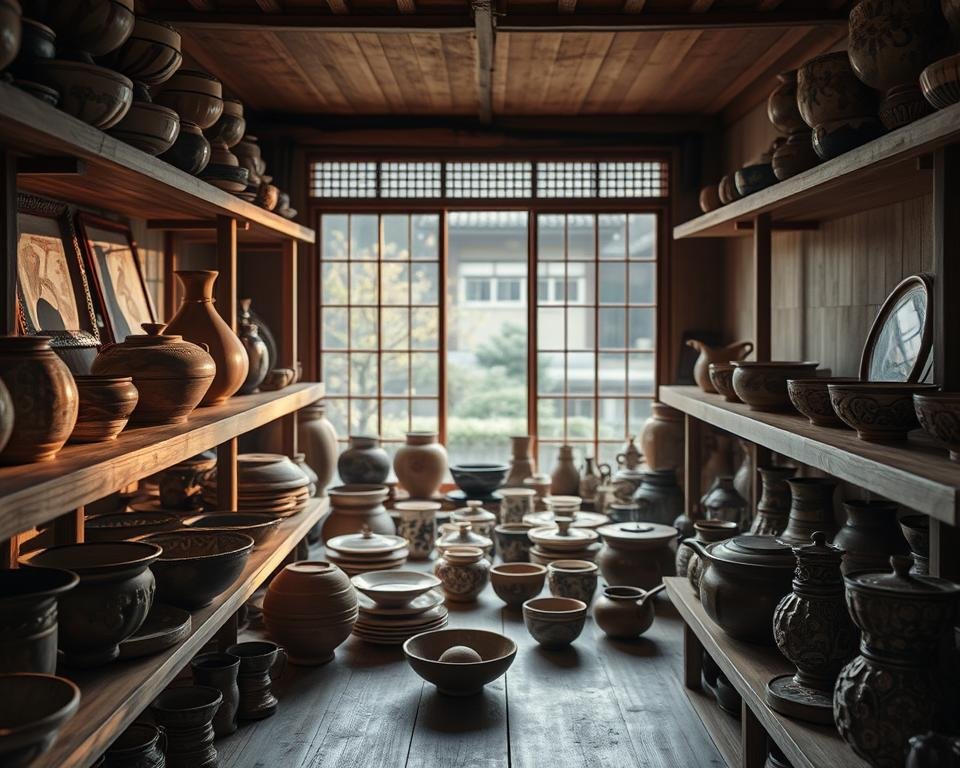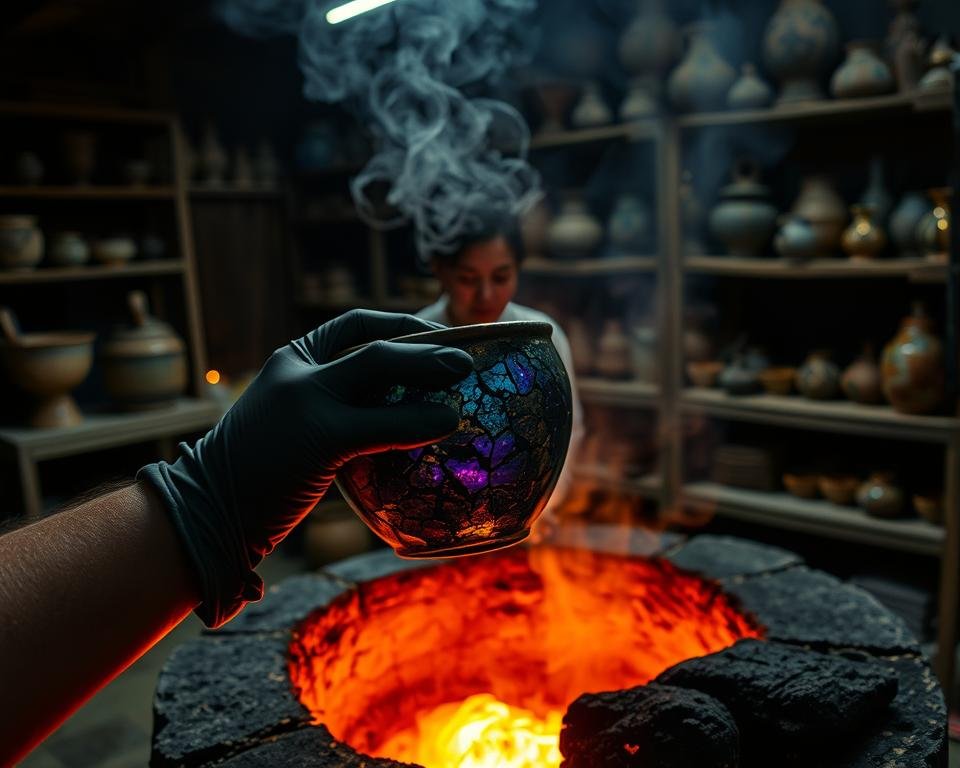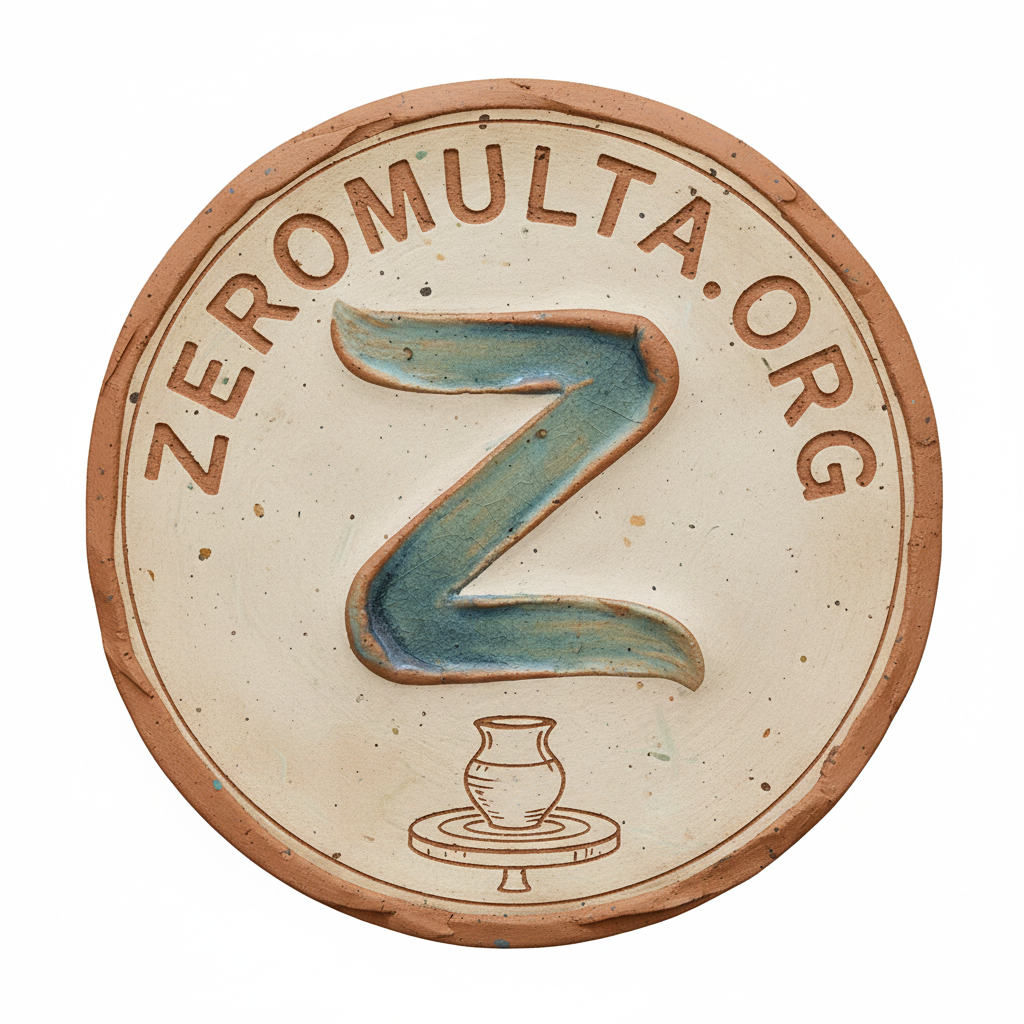Raku ceramics have been a cornerstone of artistic expression for centuries. Their unique crackle patterns and earthy tones captivate art lovers worldwide. As a Raku pottery enthusiast, I’ve learned the importance of proper care to maintain their beauty and longevity.
Proper care is key to preserving the beauty of Raku ceramics. In this article, I’ll share the essential steps to care for your Raku ceramic pieces. This way, they’ll stay stunning for years to come.
Key Takeaways
- Understand the unique characteristics of Raku ceramics.
- Learn how to clean Raku pottery effectively.
- Discover the best methods for storing Raku ceramics.
- Tips for maintaining the beauty of Raku ceramics.
- Common mistakes to avoid when caring for Raku pottery.
Understanding Raku Ceramic: What Makes It Unique?
Raku ceramics are special because of their rich history and unique traits. To truly appreciate them, we need to explore their origins and what makes them stand out.
The History of Raku Pottery
Raku pottery started in 16th-century Japan, mainly for tea ceremonies. The name “Raku” means “enjoyment” or “comfort” in Japanese. The Raku family in Kyoto pioneered the unique firing process that creates the ceramics’ crackle pattern.
“The Raku process is not just about creating pottery; it’s an art form that requires patience, skill, and a deep understanding of the materials.”
Unique Characteristics of Raku
Raku ceramics are known for their earthy tones and crackle patterns. These are due to the Raku firing process. The glazing techniques used also add to their unique look. Raku glazing techniques involve applying a specific type of glaze that reacts to the firing process, creating a range of colors and textures. This combination makes Raku pieces beautiful and full of history and tradition.
| Characteristics | Description |
|---|---|
| Earthy Tones | Raku ceramics often feature earthy tones due to the materials used in the glazing process. |
| Crackle Pattern | The crackle pattern is a result of the rapid cooling process during firing. |
| Unique Glaze | The glaze used on Raku ceramics reacts to the firing process, creating unique colors and textures. |
Common Uses for Raku Ceramic
Raku ceramics are often used for decoration, like vases, bowls, and wall hangings. Their unique look makes them art pieces, often displayed in homes and galleries. Knowing about the Raku firing process and Raku glazing techniques helps us appreciate the craftsmanship behind these beautiful pieces.
The Importance of Proper Care for Raku
Raku ceramics need special care because of their unique traits. The making of Raku ceramics involves taking pieces out of the kiln at high heat. Then, they cool down quickly, which can make them more likely to break.
Why Raku Needs Special Attention
Raku ceramics need extra care because they are porous and go through a special firing process. This process makes them look beautiful but also makes them more likely to crack. Keeping the kiln in good shape is key to avoid making the ceramics worse.
Consequences of Neglect
Not taking care of Raku ceramics can cause many problems. These include cracks, fading, and breakage. If you ignore their needs, you might lose the beauty and value of your Raku pieces.
Proper care means more than just handling and storing the ceramics. It also means keeping the kiln in top shape. Regular checks on the kiln’s elements and making sure it’s calibrated right can help. This way, you can prevent damage to your Raku ceramics during firing.
Basic Cleaning Techniques for Raku Ceramics
Keeping Raku ceramics in top shape is all about the right cleaning methods. As someone who loves Raku, I’ve found that cleaning them needs care. It’s not just about making them look good, but also keeping them safe.
Handwashing vs. Dishwasher
Choosing between handwashing and using a dishwasher is key. I always suggest handwashing. Dishwashers can be too hot and use harsh cleaners, which can harm the glaze. Handwashing is gentler and keeps the ceramic safe.
To handwash Raku ceramics, use mild soap and soft, lint-free cloths. This combo cleans well without scratching. Stay away from rough stuff or strong cleaners to avoid glaze damage.
Choosing the Right Cleaning Tools
The right tools are essential for cleaning Raku ceramics. Soft-bristled brushes are great for dusting off small details. Soft cloths are best for wiping down the surface. For tough stains, a mild soap solution works, but test it first to avoid glaze damage.
Using the right cleaning methods and tools helps keep your Raku ceramics in great shape. Regular, gentle cleaning keeps them looking beautiful and extends their life. This way, you can enjoy these special pieces for many years.
Storing Your Raku Ceramics Safely
Storage is key to keeping your Raku art looking great. It helps your ceramics stay beautiful for many years. This makes them a joy to own.
Ideal Conditions for Storage
Keep your Raku ceramics in a dry, stable place. Direct sunlight can fade or change their color. Store them in a cabinet or on a shelf away from windows and sunlight.

Avoiding Damage During Storage
Don’t stack your Raku ceramics on top of each other. Store them separately, wrapped in soft cloth or paper. This protects them from scratches.
By storing your Raku ceramics right, you can enjoy them for a long time. They will stay beautiful and unique. Proper storage is easy and keeps your Raku art looking great.
Protecting Raku from Temperature Changes
Keeping Raku ceramics safe from extreme temperatures is key. These ceramics, known for their unique crackle pattern and earthy colors, are sensitive to temperature changes. This is because of their special composition and firing process.
Understanding Raku’s Sensitivity
Raku ceramics are made using a special firing technique. This technique involves removing the piece from the kiln at a high temperature and then cooling it quickly. This creates the crackle pattern but makes them more prone to damage from temperature changes.
To prevent cracking or breakage, it’s essential to handle Raku ceramics with care, when exposing them to different temperatures.
Tips for Safe Heating and Cooling
When heating or cooling Raku ceramics, do it slowly to avoid sudden temperature shocks. For example, if using them for serving food, don’t put them straight from the fridge into a hot oven. Let them adjust to room temperature first.
When cooling, let the ceramic cool down slowly. By following these Raku sculpting tips and being mindful of temperature changes, you can enjoy your Raku ceramics for years.
Repairing Minor Damage on Raku Ceramics
Raku ceramics can sometimes get minor damage. It’s important to fix this damage gently to keep the piece looking good.
Identifying Types of Damage
First, you need to know what kind of damage your Raku ceramic has. This could be cracks, chips, or glaze issues. Each damage needs a different fix.
Cracks are tricky because they can get worse if not fixed right. Chips are smaller but need careful fixing to look seamless.
Simple Repair Techniques
For small damage, start with a good adhesive. There are many adhesives made just for ceramics. Make sure it works with Raku ceramics.
To fix a crack, put adhesive along it and fill it up. For chips, apply adhesive to the chip and press the piece together gently.
Let the adhesive dry completely, as the instructions say. Sometimes, you’ll need to touch up the area to match the rest.
Learning these repair tips can help your Raku ceramics last longer. But for big damage, it’s best to get a pro to fix it right.
Enhancing the Beauty of Raku Ceramics
To make Raku ceramics look their best, you need to care for them right. Knowing how to handle your Raku pieces keeps their colors bright and glaze looking great.
Keeping Colors Vibrant
Keeping Raku ceramics’ colors bright is key. Direct sunlight can dull the colors, so place them where sunlight is filtered. Also, avoid extreme temperatures to keep the glaze and colors safe.
Tips for Maintaining Vibrant Colors:
- Avoid direct sunlight exposure.
- Keep away from extreme temperatures.
- Dust regularly with a soft, dry cloth.
Using Oils and Waxes
Using the right oil or wax can protect and enhance your Raku ceramics’ glaze. These products keep colors bright and guard against small scratches and spills. Choose an oil or wax that matches your ceramic’s glaze type.
Application Tips:
- Use a soft cloth to apply a small amount of oil or wax.
- Gently buff the surface to create a uniform sheen.
- Reapply as needed to maintain the protective layer.
By following these tips, you can enjoy your Raku ceramics for many years. Proper care and maintenance not only keep them looking good but also show respect for the artist’s work.
Displaying Raku Ceramics with Care
Displaying Raku ceramics is more than just putting them on a shelf. It’s about preserving their beauty and the special qualities from the Raku firing process. Knowing this process helps us appreciate and display Raku ceramics in their best light.

Factors to Consider When Choosing a Location
Choosing the right spot for your Raku ceramics is important. Lighting, temperature, and humidity play big roles. Direct sunlight can fade colors, and extreme temperatures can cause cracks.
For more tips on caring for Raku pottery, check out our guide on caring for Raku ceramics.
Think about the natural light and how it affects your ceramics. Try to display them in a spot with filtered or indirect light to keep their colors bright.
Creating an Artistic Display
Creating a display for your Raku ceramics is about more than looks. It’s about showing off their special qualities. You can group similar pieces or mix them up to show off your collection’s variety.
Use decorative stands or shelves to make your Raku ceramics stand out. Try different setups until you find one that looks good and catches the eye. This way, you’re not just showing off your ceramics. You’re also telling a story through their shapes and glazes, thanks to the Raku firing process.
When to Seek Professional Help for Raku Care
Caring for Raku ceramics can be very rewarding. But, there are times when you need a pro’s help. Regular upkeep, like cleaning and kiln maintenance, can avoid many problems. Yet, serious damage or complex fixes might need an expert’s touch.
Significant Damage
Big damage, like large cracks or broken parts, calls for a professional. A skilled restorer can fix your piece right. This way, it stays in great shape.
Qualified Restorers
Looking for a restorer? Find someone with Raku ceramic experience. They can tell you how to fix the damage. Plus, keeping your kiln and ceramics clean helps prevent problems.
